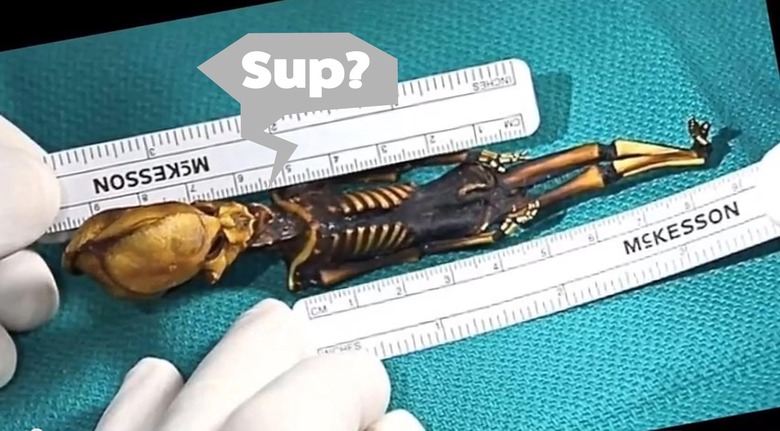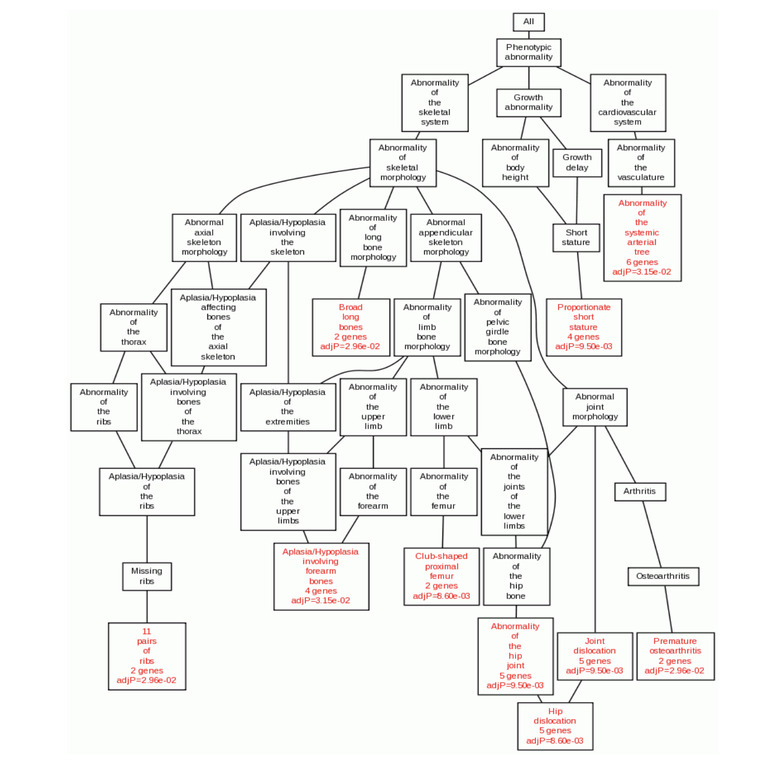Atacama Mummy Wasn't An Alien, It Was A Mutated Human
The mummified remains of a humanoid were discovered over a decade ago in Chile's Atacama Desert. When found and made public, this tiny specimen was subject to its fair share of conspiracy theories and high hopes that it was the first solid proof of humanoid life born not of this world. It certainly looks like what pop culture tells us is a little gray alien, doesn't it?
A study published this week shows that this dollar-bill-sized being might never have left its mother alive. If it did, it most certainly did not survive long. The study's findings showed this creature to have familiar DNA, albeit DNA that showed abnormal numbers of mutations of several genes.
ABOVE: El Sabah Nur, "The First Mutant," aka Apocalypse. This being is part of the fictional Earth 22 timeline in Marvel Comics. Apocalypse had special abilities and powers, while the tiny creature we're talking about today (probably) did not. BELOW: The Atacama mummy.

This is, indeed, a human being. That's what this latest study found, and that's what we're meant to believe. What's strange here is the abundance of mutations found in seven of this fetus's genes. Each of the following genes in this body were found to have mutations present: COL1A1, COL2A1, KMT2D, FLNB, ATR, TRIP11, and PCNT.
NOTE: I say "it" in the title because while it does appear to be a human, the extreme age of the remains turn it into more of a historical artifact find, or a natural history find, rather than what might be called a grave robbery. Then again, quite a few people suggest that excavations of any human burial is a disturbance of our ancestors and an act that's just ASKING for a curse.
Study lead author Professor Garry Nolan of Stanford University made clear with Live Science the extreme rarity of this specimen. This many mutations in a single subject, all affecting skeletal development, has never been reported before now. It does not appear that this body was the subject of any sort of cultural practice of cranial shaping.
"Deeper knowledge about bone growth disorders will point to how normal growth must develop," wrote Nolan. "It might offer understandings of how we can (say, with drugs) stimulate bone growth in cases of catastrophic accidents to help patients."

This sort of bone shaping in such a small creature – especially humanoid – made it easy to misdiagnose origins at first glance. These mutations seem to have made the fetus's bones fuse well before they should have been set in place – making some early observers believe this might have been a very, very tiny alien, not a fetus of a human being.
"The era of single gene/single disease is just about over — it's now time to look at the more subtle effects when genes interact," wrote Nolan. "In isolation, a gene might have no effect ... but combined with other genes, the outcomes can be dramatic."
For more information on this study, have a peek at CSHLP Genome Research. There, the paper "Whole-genome sequencing of Atacama skeleton shows novel mutations linked with dysplasia" can be found by authors Sanchita Bhattacharya, Jian Li, Alexandra Sockell, Matthew J. Kan, Felice A. Bava, Shann-Ching Chen, María C. Ávila-Arcos, Xuhuai Ji, Emery Smith7, Narges B. Asadi2, Ralph S. Lachman8, Hugo Y.K. Lam2, Carlos D. Bustamante, Atul J. Butte, and Garry P. Nolan. This paper can be found with code doi:10.1101/gr.223693.117 published March 22nd, 2018.
